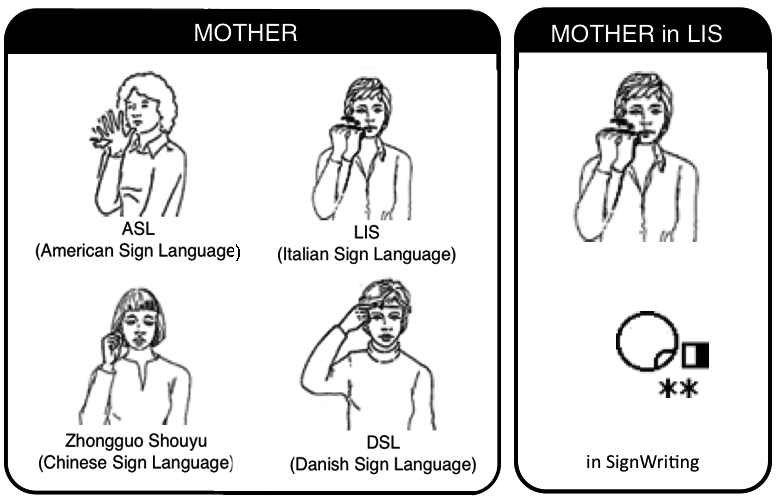Deaf people do not just communicate with gestures: they use a complex language with a complex grammar, which can express any kind of concept, from concrete to highly abstract. Sign language is not universal: as hearing communities, each deaf community has its own sign language, deeply linked to the culture within has been developed. At ISTC, the Sign Language and Deaf Studies Research Unit (SLDS), within the Language and Communication Across Modalities Laboratory (LaCAM), has a very long tradition of sign language studies, with a particular attention to the sign language used by Italian deaf people: Italian Sign language or LIS.
Signed languages are just like spoken languages: they have their own grammar, syntax, rules and constrains, and they aren't based on the spoken language used in the Country they belong to. The SLSD has provided the first description of phonological, lexical and grammatical aspects of LIS. Currently, one central research topic is the study of the peculiarity of sign languages, distinguishing them from spoken languages.
In this context, following the semiological model developed by French researcher Christian Cuxac, at ISTC the Sign Language and Deaf Studies Research Unit (SLDS) is studying highly iconic structures largely used in LIS signed discourse to depict and to describe events, objects, concepts, etc., taking in due account the iconic features that Sign Languages do indeed display in their primary, face-to-face form.
More general considerations linked to the "face-to-face" status of Signed Languages have to be posed, because of the lack of an adequate writing system which can be used to write and transcribe signed discourses. Appropriated investigations of the crucial features distinguishing Signed from Spoken languages require representation and annotation tools that are still to be developed. Since 2005, SLDS unit begun experimenting the use of Sign Writing as a tool for both composing LIS texts directly conceived in written form, and transcribing video recorded LIS corpora of narrative, discourse and conversational texts.
The lack of written forms of their signed languages might be one of the reasons that render more difficult, for deaf signers, to achieve appropriate literacy skills. SLDS research shows that relying on written LIS texts, deaf signers can autonomously perform meaningful comparisons between LIS and written Italian at different structural levels: lexical, morphological, syntactic, textual, pragmatic.
Contact: Paolo Rossini
ISTC Group: Language and Communication Across Modalities Laboratory
Relevant publications
Antinoro Pizzuto, E, Pietrandrea, P., Simone, R. (eds.) (2007), Verbal and Signed Languages: comparing structures, constructs and methodologies. Berlino: Mouton De Gruyter.
Antinoro Pizzuto, E., Chiari, I. & Rossini, P. (2008). The representation issue and its multifaceted aspects in constructing sign Language corpora: questions, answers, further problems. In O. Crasborn, E. Efthimiou, T. Hanke, E.D. Thountenhoofd & I. Zwitserlood (eds.), Proceedings of the 3rd Workshop on the Representation and Processing of Sign Languages: Construction and Exploitation of Sign Language Corpora, LREC 2008, Marrakech, May 27-June 1, 2008, pp. 150-158.
Cuxac, C. & Antinoro Pizzuto, E. (2010). Emergence, norme et variation dans les langues des signes : vers une redéfinition notionnelle. Langage et Societé (numero sur les Langues des Signes cordonné par B. Garcia et M. Derycke),131 : 37-52.
Wilcox, S., Rossini, P. & Antinoro Pizzuto, E. (2010) Grammaticalization in Sign Languages. In D. Brentari (ed.), Sign Languages – A Cambridge Survey. Cambridge, Cambridge University Press (pp. 332-354).
Russo Cardona T. e Volterra V. (2007). Le lingue dei segni. Storia e semiotica. Roma: Carocci.


